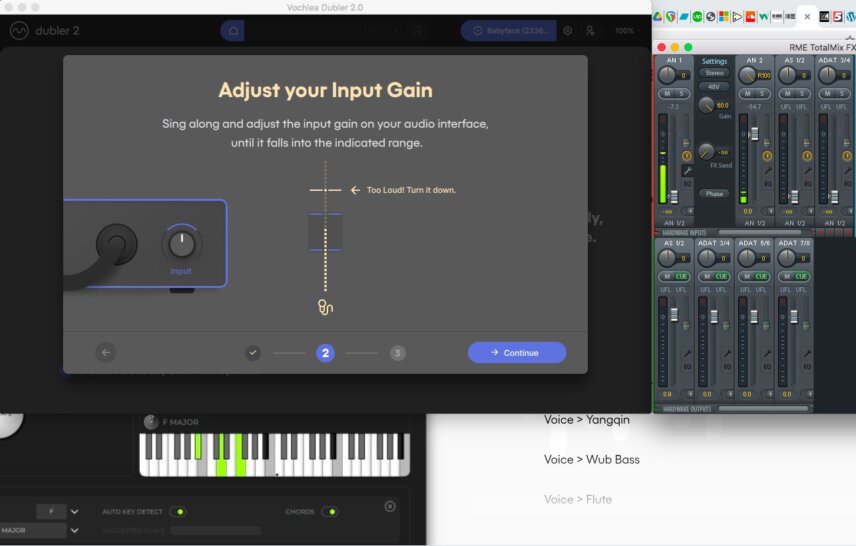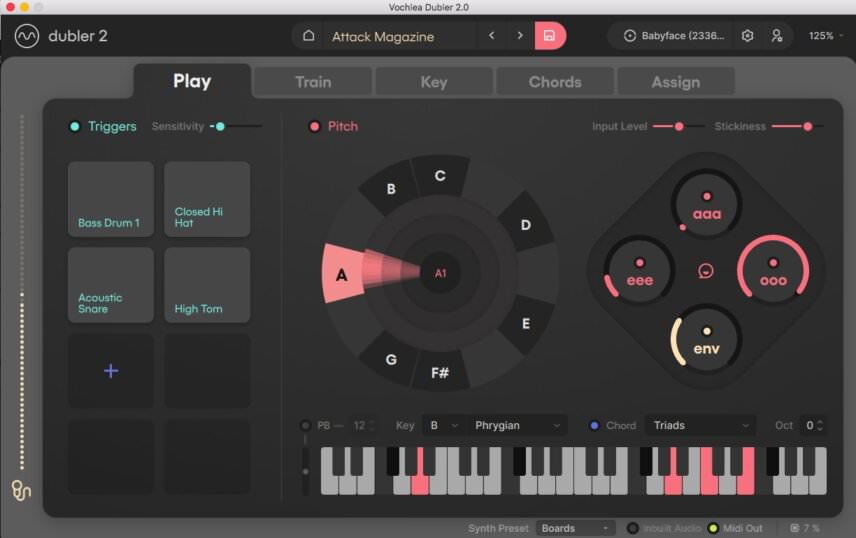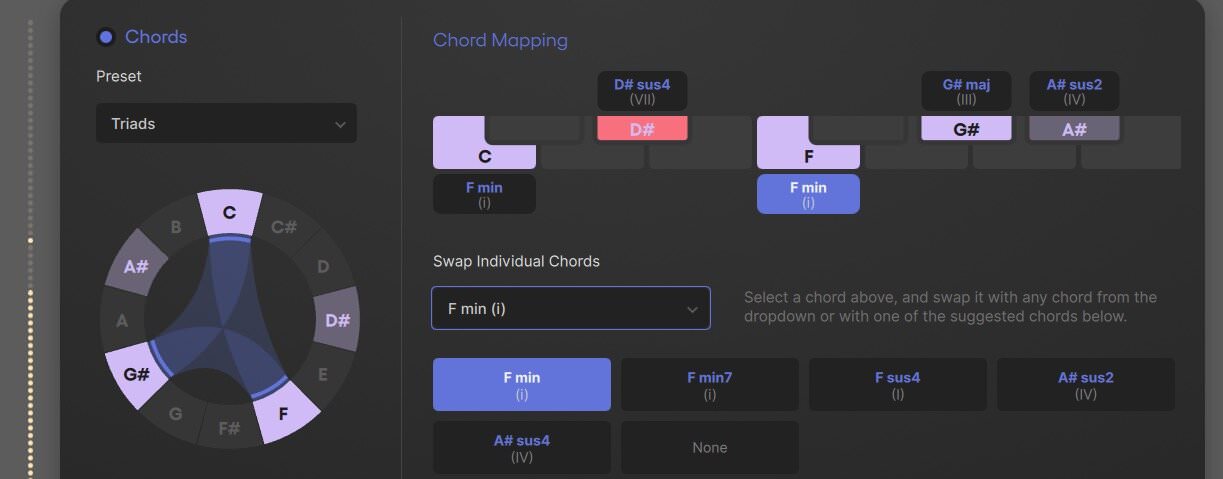Dubler2 now works with any microphone so “if it’s in your head, you can sing MIDI into your DAW”. Michael Gallagher reviews the all new, all singing Dubler2.
SING IT BACK
Dubler 2 from Vochlea is a voice-to-MIDI software application. It enables artists to generate rhythms, melodies, chord sequences and MIDI controller data by singing or vocalising beats into a microphone.
Compared to the first version of Dubler, one big change is that Dubler 2 can calibrate to any microphone. The original version required a specific USB mic bundled with the software. That is now optional rather than a requirement, making the system considerably more flexible. This means that Dubler 2 is available without the mic, as a software-only option. A free seven-day demo is available, so you can it try out before opening your wallet.
There are several other significant improvements in the new version, including built-in sounds, an expanded range of keys, scales and chords, a new pitch bend system, a redesigned interface and a lighter CPU load. Owners of the original can upgrade to Dubler 2 for £59.
Vochlea recommends using a dynamic microphone because Dubler 2 is designed to work with low sensitivity mics. That makes sense, as these are the typical commonplace mics that most vocalists will be familiar with and have to hand (e.g. the Shure SM58).
Dubler 2 is a standalone programme rather than a plugin. If using your own mic, there is a short mic calibration routine, with a meter to help you adjust the input gain. This is followed by pitch calibration that asks you to sing a range of different pitches. The process took only a few minutes and was very straightforward.

WHAT’S INCLUDED
The core functionality of Dubler 2 appears similar to the original. There are two main elements: triggers, designed to generate rhythmic parts, and pitch, designed to create melodies and chord sequences.
A row of tabs gives access to additional features:
- a training area for assigning triggers to vocal sounds
- a key quantizer to force the pitch into a range of musical scales
- a chord generator with a wide range of chord shapes
- settings for pitch bend, MIDI channel, and assigning MIDI controllers to voice level and vowel sounds.
It’s a comprehensive system, but without being overly complicated.
Training the rhythmic triggers is straightforward. A typical example would be to make a ‘boom’ sound into the mic and train the software to trigger a kick when it hears that sound. It’s extremely intuitive to set up, with just a few clicks needed. Each trigger can be set to generate a specific MIDI note and/or a sound from a built-in 808 sample set. The internal sounds are well-chosen and give you the means to create drum patterns straight away.
Up to eight triggers are available, but you’d need to be an adept and precise vocal performer to use them all. It works well using two or three triggers, but if you’re not a skilled vocalist, it might be difficult to get enough accuracy to use more. Triggering one drum sound at a time and building up rhythmic parts in overdubbed layers also worked well, and helped to reduce mistakes. The volume of your voice is used to determine note velocity, which can give the results a more ‘live’ and dynamic feel. Depending on your level of vocal skill and how tight you want the timing, you may need to quantize and edit out false notes to get the desired results.
With the pitch system, again there are some built-in synth sounds so you can get going immediately. A slider for ‘stickiness’ optimises the detection system for short fast notes or long-held ones. The key quantizer is particularly helpful if your vocal pitch isn’t so accurate. Dubler 2 has 15 different scales to choose from, including chromatic, modal, pentatonic and whole tone options, or you can set a custom scale. The chord options are also extensive and highly configurable, opening up a whole new level of musical possibilities.
Unsurprisingly, vocal ability makes a big difference to the results. For a skilled beatboxer or singer, Dubler 2 would hold significant potential and could make writing music fast and intuitive. If you’re less vocally adept, the results will likely need some tweaking to make them useable in a typical track.
BEAUTY OF CHANCE
There’s an undeniable appeal to the idea of a system that aims to translate musical ideas “in your head” into reality. In use, however, a more intriguing aspect becomes apparent. Interacting with the system generates material that couldn’t have been conceived in advance. The immediacy of the interface lends itself to improvisation, and to adapting the vocal performance to how the software works. The results can sound markedly different to more traditional methods of MIDI sequencing. Dubler 2 would be well worth exploring if you’re looking for new ways to make your tracks more musically varied, improvised or ‘live’ sounding, particularly if you have (or are willing to develop) vocal skills that are good enough to get the desired results.

There is enormous scope for using unusual scales, chord mappings and controllers to generate novel musical ideas. There’s also no need to use all the features. You can play to your strengths. If your vocal pitch is better than your rhythmic chops, for example, you could focus on that side, using long-held chords to generate ambient textures. Or with the MIDI controller section, you could use vowel sounds to alter the parameters of a device that is being sequenced in a more conventional way. Another option would be to experiment with non-vocal triggers, training the system to respond to drum hits or finger taps for example. And a particularly cool feature is you can also use your amplitude envelope to alter the parameters, so modulating parameters with the loudness you’re singing at! Pretty crazy level of control.
SUMMARY
In summary, for vocalists working in electronic music, Dubler 2 has the potential to transform the creative process. It improves on the original version in a number of ways, most notably adding the ability to work with any dynamic microphone, and expanding the key and chord functions.
For dance music producers who aren’t vocalists, Dubler 2 is unlikely to replace a more traditional workflow, but offers a fun and inventive additional mode of music creation. It might be of particular interest to artists who want to explore improvisational approaches to making electronic music.
The Verdict
Price: £189 software. £249 with microphone. Upgrade £59
